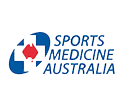Growth Plate Injuries
What is a Growth Plate?

A growth plate is a gap in bone that is made of cartilage and allows the bone to continue to grow. When the bone stops growing the growth plate fuses with continuous bone.
At What Age Do Growth Plated Close?
It is a common misconception that growth plates stay open until you stop growing. Different growth plates fuse at different ages and, in many cases, the growth plates are at their most vulnerable to injury just before or as they start to fuse.
What Types of Growth Plate Injuries Occur?
- Traction Apophysitis.
The most common type of growth plate injury is called ‘traction apophysitis’. The apophysis is a growth plate that occurs where a tendon attaches to bone. Repetitive use of the tendon pulls on the growth plate. Different growth plates are vulnerable at different ages resulting in the following examples of apophysitis
- Back of the heel (Sever’s Disease)
- Front of the knee (Osgood Schlatter’s Disease)
- Sit-bone (Hamstring Apophysis)
- ‘Point of the hip’ (ASIS Apophysitis)
- Apophyseal Avulsion
An avulsion means ‘pulling away’ and it usually occurs after a there has been a period of traction apophysitis (see above). The patient will usually describe days, weeks or months of growth plate pain (like an ache after sport) but then will experience a sudden and very painful ‘pop’ that occurs while producing a maximum sporting effort like sprinting, jumping or kicking a ball with maximum force. Usually this produces significant pain and limping afterwards.
- Growth Plate Fractures
Growth plates can become fractured with trauma. The risk with a growth plate fracture is that it can result in disrupted growth if it is not managed correctly (and sometimes even if it is!). These always need to be managed by an expert.
- Slipped Growth Plates
There is a growth plate in the hip that can slip without an obvious cause. This is a very serious condition that requires immediate surgical attention. It generally happens in adolescents who develop groin or thigh pain and have a painful limp with pain rotating their hip inwards. This usually needs an urgent X-ray to check to see if the growth plate has slipped.
- Growth Plate Stress Injuries.
Growth plates can become overloaded with repetitive sports which can result in stress injuries. Stress injuries can be a bit like growth plate fractures in that if they are managed incorrectly there is a risk that it can disrupt normal growth of that bone. Common areas of concern are the wrists of gymnasts and knees in running and jumping athletes.
What is the Treatment for Growth Plate Injuries?
As there are many types of growth plate injuries, there is no single treatment for all. The most common and least concerning is a traction apophysitis which almost all active kids will get to a varying degree at some stage. At the other end of the spectrum is a slipped femoral head growth plate which requires urgent surgical referral.
A specialist Sport and Exercise Physician has the necessary experience and skills to determine the correct treatment and the urgency of treating a growth plate injury.
Do Anti-Inflammatories Help Growth Plate Injuries?
Anti-inflammatory medication can be very effective treatment for an inflamed apophysis but is not indicated for a growth plate fracture. In traction apophysitis, there is often excessive inflammation and using anti-inflammatory medication can be part of an effective strategy at treating the underlying problem and is not just a way of ‘masking’ the pain.





















